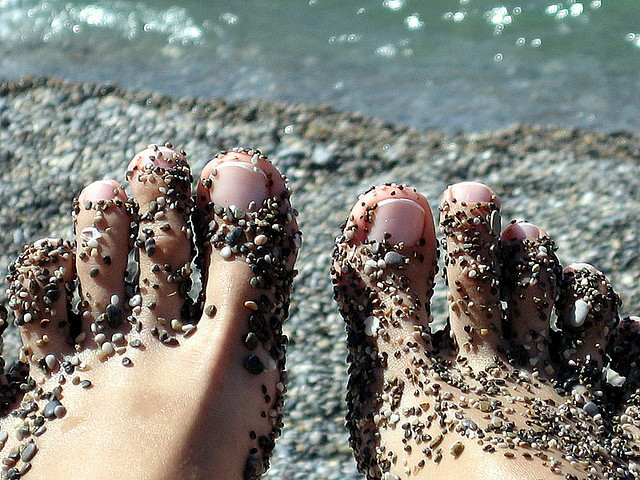……………………………………………………………………………

quinn.anya Wikimedia.org Females dancing barefoot
………………………………………………………………………………………………
The Forgotten Health Trick You Need to Do for 150 Minutes a Week
Get barefoot for a truly prehistoric health boost.
I have long been convinced that the body is healthier when we have more physical contact with the natural energetic field of the earth. I have been intensely involved in grounding research for years and have written extensively about it. In Health Revelations From Heaven and Earth, it’s a topic coauthor Tommy Rosa and I cover a lot. Grounding (also referred to as Earthing) means connecting your body directly to this field and experiencing the benefits of connection with the electric fields of Earth.
This is easy to do. My recommendation is to ground at least 150 minutes a week. You can do that by going barefoot while gardening, camping, hiking, or walking on the beach or by swimming in the ocean—there are so many ways to connect to the natural world.

Jakub Martyńsk from Warsaw, Poland
Human feet (Fethye, Turkey). Wikimedia.org
……………………………………………………………………………………………
When outdoors, wearing thin-soled, plain leather shoes will let you make contact with the earth’s natural vibration. Rubber soles like those of tennis sneakers or the neoprene found in running shoes keep you disconnected from the earth. Other ways to ground: You can even sleep, work, or relax indoors on special conductive sheets or mats connected to the earth with wires plugged into a grounded wall outlet or a ground rod outside.
A Prehistoric Prescription
Although studied scientifically in the last decade, grounding dates back to prehistoric ages. Since the dawn of time, humans have walked barefoot and have slept on the ground, oblivious to the subtle energetic signals underfoot that research now shows help regulate the body’s intricate mechanisms. Healers in many cultures throughout history knew of the natural healing endowment of the earth, though not in electrical terms.


































